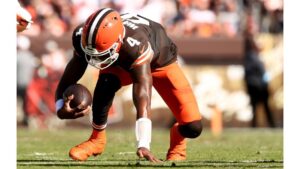Within minutes of arriving in the United States for the first time, on November 28, 1959, 27-year-old Zenzile “Miriam” Makeba was whisked to the Manhattan office of the famous Jamaican-American singer Harry Belafonte. After a quick hug, Belafonte exclaimed: “Miriam! We haven’t a minute to waste!”
Belafonte, who had seen her performing in London a few weeks earlier, had pulled out all the stops to arrange a US visa for Makeba, a Black South African woman at the height of apartheid. And now that she was finally on US soil, he was determined to make it count.
Less than two days later, Makeba found herself at the NBC studios in Los Angeles trying to keep up with the ceaseless chatter of the makeup artist on the Steve Allen Show: “Don’t worry about a thing honey, you’ll be great. Don’t even think about those 60 million people who’ll be watching.”
“How many?” asked Makeba in astonishment.
When Allen introduced her, Makeba recalled that the host “actually held me up so I didn’t collapse from fright”. Luckily, the bright lights prevented her from seeing the audience, so she imagined she was singing to her mother, Christina, and her daughter, Bongi, back in South Africa. The trick worked and the audience was rapt by her performance of Into Yam, a traditional isiXhosa – her native language – song about a woman in love with a man who is habitually drunk.

This contrast between her shy off-stage persona and commanding stage presence was always a Makeba hallmark. The future jazz legend Hugh Masekela first saw her perform in Johannesburg in 1953 when he was just 14: “Miriam came and sang … and we were just completely mesmerised. We were all madly in love with her, you know. She had such an impact on us, we were just blown away.”
A few days later, Makeba began a four-week run at a legendary New York jazz club, the Village Vanguard. Before her first performance, Belafonte arranged for her to get her hair done in Harlem. After the stylist had spent hours straightening her hair, Makeba was “too afraid to look in a mirror”. When she got back to her hotel and saw what had been done to her, she burst into tears. As she wrote in her first autobiography: “This is not me. I put my head in the hot water and I wash it and wash it. I am not a glamour girl. I’m just naturally myself.”
Makeba was not just ahead of her time musically.
Belafonte invited some of his influential friends to watch that first Village Vanguard show: Sidney Poitier, Duke Ellington, Nina Simone and Miles Davis, to name but a few. Makeba sang a selection of African and English numbers and even one Yiddish song. But it was Qongonthwane, a song that one critic likened to “the popping of champagne corks”, that set the crowd alight. From that moment on, she was known as the “click-click girl”.
As The New York Times noted at the time: “There are few cases in show business where a performer’s life has changed more suddenly, more dramatically, and with so much promise.”
More than six decades later, her songs would continue to grip Americans. One of her fans? Vice President Kamala Harris, who on November 5 could become the first Black woman president of the US.

Origin story
Makeba achieved overnight success in the US. But just getting to the country in the first place was even more remarkable. When she was born, she was so sick that her father spent the first two days of her life praying for her to die. No sooner had she recovered than her mother was imprisoned for brewing traditional beer.
Miriam Makeba spent the first six months of her life in prison.
Being born Black, poor and female in South Africa should have consigned Makeba to a life of cleaning white people’s houses. But her magnetic musical talent led to one opportunity after another. First, she was allowed to join the school choir a year early. Then she got to sing with a string of township bands, each more famous than the last.
As a 20-something singer touring with the Manhattan Brothers, the biggest Black band in South Africa, she was involved in a crash with a white family’s car that left the white father and one of his children dead. The whites were bundled into an ambulance and the Blacks were left to die on the side of a provincial road. The local “white” hospital refused to treat them and one of Makeba’s companions ended up dying an entirely preventable death when he finally reached Johannesburg two days later.
In 1956, Makeba was one of the artists chosen to participate in African Jazz and Variety, a touring revue that showcased the best of Black South African music to white South African audiences. As luck would have it, Lionel Rogosin, a US filmmaker who was making a documentary about the evils of apartheid, saw the show. Out of all 36 performers, he felt Makeba was “the most original” – so much so that he asked her to star in his film. All she had to do was play herself by singing two songs in a shebeen (township pub) scene.
Makeba was well aware of the perils of irking the apartheid government. But Rogosin promised to take her overseas. “No one can expect a talent like yours to stay cooped up in South Africa forever,” he implored. Rogosin called his film Come Back, Africa, a direct translation of an African National Congress (ANC) — a South African political party — slogan. To avoid police attention, all the filming was done in the middle of the night. Makeba did her short scene and forgot about it.
She had more important things to worry about, like playing one of the leading roles in King Kong, a jazz musical with an all-Black cast that was based on the tragic life of South African boxer Ezekiel Dlamini. It is hard to overstate what a big deal King Kong was in the history of South African theatre. The show opened on February 2, 1959 – just nine months before Makeba’s triumphant US debut – to an audience that included the (white) Mayor of Johannesburg, a host of (white) mining moguls and the recently-married poster children of the anti-apartheid struggle, Nelson and Winnie Mandela. Makeba performed with a badly sprained ankle, in a shoe several sizes too large, but no one seemed to notice. One white theatre critic called it “the greatest thrill in 20 years of South African theatre-going”.

Towards the end of King Kong’s Johannesburg run, Makeba collapsed while walking past the city’s (white) General Hospital. In true apartheid style, she was driven 20km (12.4 miles) to Nokuphila, the Black township hospital, where she spent two days in a coma. When she woke up, the doctors told her she had had an ectopic pregnancy and was lucky to be alive.
In August 1959, thanks to Rogosin’s wheeler-dealing, Makeba boarded a South African Airways plane bound for Europe and the Venice Film Festival. Being the only Black person on the plane, no one wanted to sit next to her and she got three seats to herself. When the hostess asked if she would like her seat made into a bed, Makeba took it as her cue to brush her teeth and change into her nightie: “Of course, it seemed natural to me that if I was going to sleep, I should change into my nightie … Everybody was just staring at me. I didn’t know why.”
Makeba was a hit in Venice. Her singing was contagious and audiences had never encountered a Black starlet who refused to straighten her hair or use extensions. Rogosin was dead set on launching her US career. But struggles getting a US visa kept her in limbo in London. Without Belafonte’s help, she may never have made it stateside.

Living the ‘American dream’
When she first got to the US, Makeba steered clear of politics. Her musical career took off and she developed deep and lasting relationships with people like Poitier, Marlon Brando and Martin Luther King. Her bond with Nina Simone was especially tight – so tight, in fact, that it extended beyond the grave.

But the similarities between apartheid South Africa and the Jim Crow South were too glaring to ignore. Belafonte, who was a master at treading the line between music and political activism, served as a mentor. When he and Makeba were denied a table at a restaurant in Atlanta because of the colour of their skin, for example, Belafonte turned the situation to their advantage. He returned a couple of hours later with a media posse to make the following statement: “What can we as Americans say to a guest like Miss Makeba? She comes from a land of oppression only to find a situation like this.”
Slowly, she became something of an anti-apartheid ambassador in exile. As Masekela noted, Makeba learned to use the brief English introductions to her songs to educate the world about apartheid. He said: “I think there is nobody in Africa who made the world more aware of what was happening in South Africa than Miriam Makeba… Miriam carried the torch for this country, and I think she kept the names of the Oliver Tambos, the Robert Sobukwes [and] Nelson Mandelas alive in people’s minds all that time.”
In March 1960, Makeba was horrified to read about the massacre at Sharpeville of 69 people by South African police. As news filtered through slowly to the US, she learned that many of the victims had been shot in the back – and that two of her own uncles were among the dead. As the historian of South African jazz, Gwen Ansell, puts it, Makeba’s “articulate anger intensified after Sharpeville”.

The biggest stage of all
On July 16, 1963, Makeba addressed the United Nations Special Committee on the Policies of Apartheid. In a quiet voice and taking frequent nervous pauses, the usually consummate performer said:
“Some 5,000 people have in recent months been put behind prison bars. Among those who have been jailed and detained… are many of our prominent leaders which include Chief AJ Luthuli, Robert Sobukwe, Nelson Mandela, Mrs Lillian Ngoyi and only last week, Mr Walter Sisulu… These people must be released at once. I am certain nobody can liberate his people when he is in a prison cell or concentration camp…
“My country has been turned by the [Hendrik] Verwoerd government into a huge prison. I feel certain that the time has come for the whole of humanity to shout, ‘Halt!’ and to act with firmness to stop these crazy rulers from dragging our country into a horrifying disaster.”
South Africa’s apartheid government responded by cancelling Makeba’s citizenship and banning her music. But Makeba would not be deterred. She spoke to the UN about the horrors of apartheid again the following year. This time she asked:
“You and all the leaders of the world, would you act differently, would you keep silent and do nothing if you were in our place? Would you not resist if you were allowed no rights in your own country because the colour of your skin is different from that of the rulers, and if you were punished for even asking for equality? I appeal to you, and to all the countries of the world to do everything you can to stop the coming tragedy. I appeal to you to save the lives of our leaders, to empty the prisons of all those who should never have been there.”
(After the Soweto uprising of 1976, Makeba addressed the UN twice more. Quite something for someone who once claimed not to “sing politics”.)

Mama Africa marries the ‘black messiah’
By 1966, Makeba had established herself as both a mainstream musical star and a prominent political spokesperson. She had won a Grammy award and she was on first-name terms with not just the Hollywood A-list but also many of the presidents of newly independent African states.
This all changed the following year, when she met and fell in love with Stokely Carmichael while visiting the West African nation of Guinea (they were both in the country for a festival of creative arts, as personal guests of then-Guinean President Sekou Toure). While some of her friends gave her flak about the 10-year age gap (she was the older partner), more were concerned that she was dating a “radical”. Fiercely intelligent and articulate, Carmichael liked to shock. His central quest was nothing more than equal rights for Black people. But in 1960s United States, this in itself was deeply shocking. Time magazine called Carmichael a “black power-monger”.
Makeba saw things differently: “Stokely is considered very radical and something of a menace in the US when he talks about Black power, but I don’t see anything wrong with it. Why shouldn’t power be Black?”

In a secret internal memo in 1968, J Edgar Hoover, the then-controversial head of the FBI, identified Carmichael as the “black messiah” most likely to fill the void left by the assassination of Malcolm X. He wrote that Carmichael had the “necessary charisma to be a real threat to the internal security of the United States.” Hoover took Carmichael so seriously that he got the FBI’s counterintelligence unit to spread the false rumour that he was in fact a CIA agent. The trick, known as “bad-jacketing”, worked: Carmichael suddenly found himself persona non grata in Black Power circles – a movement he had helped to found and lead.
Carmichael’s FBI woes coincided with the start of his relationship with Makeba. And she would not have to wait long to experience the impact of guilt by association. He proposed while they were in the Bahamas, where Makeba was in the process of opening a dress shop. She had been encouraged to open the shop by then-Prime Minister Lynden O Pindling, who was eager to grow Black business in his newly independent nation. But when news of her engagement to Carmichael broke, she was called to the prime minister’s office and told to leave the Bahamas immediately. When she asked why, Pindling responded simply: “Because Stokely Carmichael is an undesirable here.”
Makeba was mortified – she had been a guest of honour at the Bahamas independence celebrations – but she could not refuse Pindling’s order. Soon after landing in the US, her manager called with more bad news: Concerts and record deals were being cancelled “right and left”.
Things went from bad to worse when, the night after the assassination of Martin Luther King Jr in April 1968, Carmichael led a protest in the streets of Washington, DC. He lost control of the crowd and the peaceful protest morphed into a maelstrom of riots and looting. According to Clay Risen, author of A Nation on Fire: America in the Wake of the King Assassination, Carmichael had attempted to stop people from looting, but the media – perhaps influenced by years of CIA badmouthing – placed the blame squarely on his shoulders.
Exiled once more
Makeba was philosophical about being cancelled. “It is over now,” she wrote. “This wonderful dream come true – the little African girl who becomes a big star in America – it’s all over. I refuse to let myself cry. This part of my career is finished. But I am not finished.”
When Makeba visited Guinea the previous year, President Sekou Toure had offered to build her a home anywhere in his country. She could not say yes at the time due to her many obligations in the US. But now, as she put it, “I have only one obligation to America: to get out.”
Makeba lived in Guinea for almost 14 years, during which time she built a third career performing across Africa (apart from her native South Africa) and Europe. When interviewed for a Swiss documentary about her famous mother, Bongi said: “My mother is not only my mother but the mother of all of Africa – she is ‘Mama Afrika’.” The nickname stuck, and she was soon known as Mama Afrika.
In 1974, Makeba persuaded her close friend Nina Simone to move to neighbouring Liberia. The few years Simone spent in Africa included frequent partying with Makeba (Simone once danced naked on the tables of a Freetown bar).
After her death in 2003, Simone put the bulk of her estate assets into a charitable trust to benefit the musical education of Black African children – and she named Makeba as the trustee.
But Makeba’s time in Guinea was not all fun and games. Not only did she end up divorcing Carmichael, but she also had to deal with the deaths of her three-year-old grandson, Themba, (who died in her arms) and Bongi, her only daughter, after complications due to premature labour.
A few days after Bongi’s death Makeba received a call from Winnie Mandela expressing “from me and our father [Nelson Mandela] how deeply hurt we are that you lost your child in exile. Your only child. We just want you to know that we always think of you… You mustn’t cry Zenzi [her own people called her by her Xhosa name]. Because when we do get our land back, we will bring all our children – and also our dead – back to their own country.”

Homecoming
Makeba did eventually return to South Africa on June 10, 1990, a few months after Mandela was released from prison.
After navigating the adoring crowds at the airport, she went straight to Nancefield Cemetery in Soweto. Her mother had died in 1960, while Makeba was in New York. She was unable to return home because the South African government cancelled her passport.
“I sat on my mother’s grave and cried. I was like a baby sitting on my mother’s lap asking for forgiveness. I said: ‘Sorry, Mama. I was not able to see you when they took you to your final resting place. I am sorry I did not see you when you died. But now Mama, I am here. I am home.’” She then tried to find the graves of her grandmother and her sister, but both cemeteries had been bulldozed during apartheid.
Four years later, Makeba voted for the first time in her life. In a true full-circle moment, she was touring the US at the time, so she cast her ballot at the headquarters of the United Nations. Her vote was one of millions cast for Nelson Mandela, who became South Africa’s first Black president.
When Makeba died of cardiac arrest during a concert in Italy on November 10, 2008, she had defied the challenges of her upbringing to become a Black feminist icon and a citizen of a free South Africa. As Nelson Mandela said at the time: “The sudden passing of our beloved Miriam has saddened us and our nation… Her haunting melodies gave voice to the pain of exile and dislocation which she felt for 31 long years. At the same time, her music inspired a powerful sense of hope in all of us. She was South Africa’s first lady of song and so richly deserved the title of Mama Afrika. She was a mother to our struggle and to the young nation of ours.”
Since her death, her music has continued to inspire and enthral fans across the globe, including in the US. In 2012, the then-attorney general of California, Kamala Harris, told an interviewer how much she loved listening to Makeba. “Miriam Makeba – she’s fabulous. She’s African, and she’s got this full, soulful voice.”
A voice that Makeba also used to pose bold questions, some of which are now echoing across the US as Harris seeks the presidency.
As Makeba once asked: “Why shouldn’t power be Black?” And female, for that matter?
Read more about Makeba’s remarkable life in Nick Dall’s book Legends: People Who Changed South Africa for the Better.











More Stories
India’s envoy to Canada rejects involvement in Sikh activist’s killing
Adolescente muere en tiroteo con la policía tras informe de agresión en Aurora
‘Smile 2’ grinning to No. 1 at box office; ‘Anora’ glitters in limited release